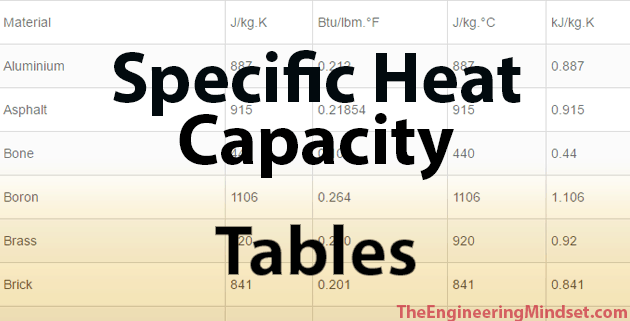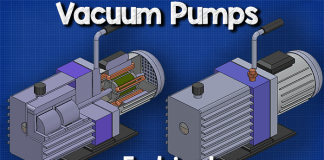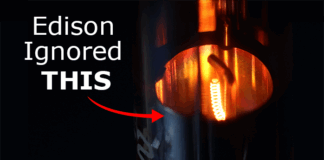The specific heat capacity of materials ranging from Water to Uranium has been listed below in alphabetical order.
Below this table is an image version for offline viewing.
| Material | J/kg.K | Btu/lbm.°F | J/kg.°C | kJ/kg.K |
|---|---|---|---|---|
| Aluminium | 887 | 0.212 | 887 | 0.887 |
| Asphalt | 915 | 0.21854 | 915 | 0.915 |
| Bone | 440 | 0.105 | 440 | 0.44 |
| Boron | 1106 | 0.264 | 1106 | 1.106 |
| Brass | 920 | 0.220 | 920 | 0.92 |
| Brick | 841 | 0.201 | 841 | 0.841 |
| Cast Iron | 554 | 0.132 | 554 | 0.554 |
| Clay | 878 | 0.210 | 878 | 0.878 |
| Coal | 1262 | 0.301 | 1262 | 1.262 |
| Cobalt | 420 | 0.100 | 420 | 0.42 |
| Concrete | 879 | 0.210 | 879 | 0.879 |
| Copper | 385 | 0.092 | 385 | 0.385 |
| Glass | 792 | 0.189 | 792 | 0.792 |
| Gold | 130 | 0.031 | 130 | 0.13 |
| Granite | 774 | 0.185 | 774 | 0.774 |
| Gypsum | 1090 | 0.260 | 1090 | 1.09 |
| Helium | 5192 | 1.240 | 5192 | 5.192 |
| Hydrogen | 14300 | 3.415 | 14300 | 14.3 |
| Ice | 2090 | 0.499 | 2090 | 2.09 |
| Iron | 462 | 0.110 | 462 | 0.462 |
| Lead | 130 | 0.031 | 130 | 0.13 |
| Limestone | 806 | 0.193 | 806 | 0.806 |
| Lithium | 3580 | 0.855 | 3580 | 3.58 |
| Magnesium | 1024 | 0.245 | 1024 | 1.024 |
| Marble | 832 | 0.199 | 832 | 0.832 |
| Mercury | 126 | 0.030 | 126 | 0.126 |
| Nitrogen | 1040 | 0.248 | 1040 | 1.04 |
| Oak Wood | 2380 | 0.568 | 2380 | 2.38 |
| Oxygen | 919 | 0.219 | 919 | 0.919 |
| Platinum | 150 | 0.036 | 150 | 0.15 |
| Plutonium | 140 | 0.033 | 140 | 0.14 |
| Quartzite | 1100 | 0.263 | 1100 | 1.1 |
| Rubber | 2005 | 0.479 | 2005 | 2.005 |
| Salt | 881 | 0.210 | 881 | 0.881 |
| Sand | 780 | 0.186 | 780 | 0.78 |
| Sandstone | 740 | 0.177 | 740 | 0.74 |
| Silicon | 710 | 0.170 | 710 | 0.71 |
| Silver | 236 | 0.056 | 236 | 0.236 |
| Soil | 1810 | 0.432 | 1810 | 1.81 |
| Stainless Steel 316 | 468 | 0.112 | 468 | 0.468 |
| Steam | 2094 | 0.500 | 2094 | 2.094 |
| Sulfur | 706 | 0.169 | 706 | 0.706 |
| Thorium | 118 | 0.028 | 118 | 0.118 |
| Tin | 226 | 0.054 | 226 | 0.226 |
| Titanium | 521 | 0.124 | 521 | 0.521 |
| Tungsten | 133 | 0.032 | 133 | 0.133 |
| Uranium | 115 | 0.027 | 115 | 0.115 |
| Vandium | 490 | 0.117 | 490 | 0.49 |
| Water | 4187 | 1.000 | 4187 | 4.187 |
| Zinc | 389 | 0.093 | 389 | 0.389 |



















Hello Mr paul
Do you have spesific heat of potato powder?
Just checked my engineering textbook, above freezing the specific heat of potatoes is 3.45 kJ/kg*K. This may not be for a dried powder, however.
Thanks Paul. Could you give me values for Plywood and Expanded Polystyrene?
Thanks.
What about the specific heat per volume. H is high because it is light and U is low because it is heavy. But a cubic centimeter of water and cc of wood or copper would be more useful.
Dr Hu, just copy the table to the clipboard and paste into your favourite spreadsheet. Delete any substances that don’t interest you and create new columns for density and a calculated specific heat per unit volume. Easy peasy. And thanks Paul for saving me some work 🙂
Dr Hu, just copy the table to the clipboard and paste into your favourite spreadsheet. Delete any substances that don’t interest you and create new columns for density and a calculated specific heat per unit volume. Easy peasy. And thanks Paul for saving me some work 🙂
Really helpful…
Hi Paul,
Most sources give for Brass a value of around 380 J/kg.K.
Your table: 920. Are you sure?
Given that brass is an alloy, the specific heat of each composition of brass would be different. It depends on the ratio of Zinc, Copper and any other imperfections.
Given that brass is an alloy, the specific heat of each composition of brass would be different. It depends on the ratio of Zinc, Copper and any other imperfections.
Are you listing heat capacities at constant volume or at constant pressure? This is very important to specify!
The specific heat of brass on this table seems to be incorrect. Should be around 380 to 390 J/kg*K.
Hi Paul
What is soil here which is rated 1810 while sand is 780 and clay is 878 J/K.kg?